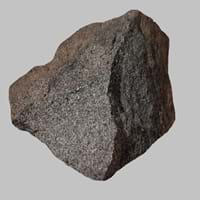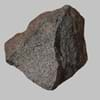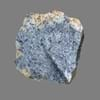Teschenite vs Mylonite
Teschenite vs Mylonite Information
Earth’s outer layer is covered by rocks and these rocks have different physical and chemical properties. As two rocks are not same, it’s fun to compare them. You can also know more about Teschenite and Mylonite Reserves. Teschenite is coarse- to fine-grained, dark-coloured intrusive igneous rock that usually occurs in sills, dikes and irregular masses and is always altered to some extent. Mylonite is a metamorphic rock formed by ductile deformation during intense shearing encountered during folding and faulting, a process termed cataclastic or dynamic metamorphism. These rocks are composed of many distinct minerals. The process of formation of rocks is different for various rocks. Rocks are quarried from many years for various purposes. You can check out Teschenite vs Mylonite information and Teschenite vs Mylonite characteristics in the upcoming sections.
Teschenite vs Mylonite Characteristics
Though some rocks look identical, they have certain characteristics which distinguish them from others. Characteristics of rocks include texture, appearance, color, fracture, streak, hardness etc. Teschenite vs Mylonite characteristics assist us to distinguish and recognize rocks. Also you can check about Properties of Teschenite and Properties of Mylonite. Learn more about Teschenite vs Mylonite in the next section. The interior uses of Teschenite include Countertops, Decorative aggregates, Entryways, Homes and Interior decoration whereas the interior uses of Mylonite include Decorative aggregates and Interior decoration. Due to some exceptional properties of Teschenite and Mylonite, they have various applications in construction industry. The uses of Teschenite in construction industry include As dimension stone, Building houses or walls, Cement manufacture, Construction aggregate, For road aggregate and that of Mylonite include For road aggregate, Landscaping, Roadstone.
More about Teschenite and Mylonite
Here you can know more about Teschenite and Mylonite. The life cycle of a rock consists of formation of rock, composition of rock and transformation of rock. The composition of Teschenite and Mylonite consists of mineral content and compound content. The mineral content of Teschenite includes Augite, Olivine, Plagioclase, Pyroxene and mineral content of Mylonite includes Porphyroblasts. You can also check out the list of all Igneous Rocks. When we have to compare Teschenite vs Mylonite, the texture, color and appearance plays an important role in determining the type of rock. Teschenite is available in dark grey to black colors whereas, Mylonite is available in black to grey colors. Appearance of Teschenite is Veined and Shiny and that of Mylonite is Dull, Banded and Foilated. Properties of rock is another aspect for Teschenite vs Mylonite. The hardness of Teschenite is 7 and that of Mylonite is 3-4. The types of Teschenite are Not Available whereas types of Mylonite are Blastomylonites, Ultramylonites and Phyllonites. Streak of rock is the color of powder produced when it is dragged across an unweathered surface. The streak of Teschenite is black while that of Mylonite is white. The specific heat capacity of Teschenite is Not Available and that of Mylonite is 1.50 kJ/Kg K. Depending on the properties like hardness, toughness, specific heat capacity, porosity etc., rocks are resistant to heat, wear, impact, etc.Teschenite is impact resistant, pressure resistant, wear resistant whereas Mylonite is heat resistant, impact resistant, pressure resistant.





